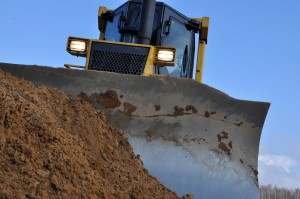Lubricants
Contamination Control

The amount of contaminants that a hydraulic or oil-lubricated system withstands, without significantly affecting the life of the component, is part of the design of the system itself and, therefore, controlling the contamination is as important as the selection of the items that makes up the system.
For this reason, contamination control must be a mandatory item in the predictive maintenance program in order to maintain the integrity of all system components, guaranteeing the hydraulic or lubricated system user an economical approach to contamination control, which allows recovery investment quickly, generating savings with improved performance, longer component life, longer oil life, longer uptime and less repairs.
An important factor in "maintenance quality" is the selection of the appropriate fluid (s) required by a component, such as fuel, oil, grease, coolant or hydraulic fluid - and the implementation of the correct procedures to ensure that these fluids are not contaminated before, during or after installation.
Equipment maintenance and repair costs are estimated to account for about a third of overall transportation costs. Going a step further, Caterpillar reports that maintenance / repair costs involving transmissions, hydraulics, final / differential drives and fuel injectors generally total up to 70% of the machine's overall operating costs. On top of that, some studies show that 75% of component failures are the result of surface degradation caused by fluid contamination. Therefore, it is simply a good deal to pay more attention to the fluids that keep the main components working as originally designed.
Types of Contamination
Solid Contamination
- Rust particles, chips and ore
- Wear particles: iron, copper, tin, zinc etc
- Fibers, paint particles and rubber
Liquid Contamination
- Cooling water
- Steam
- Equipment washing
Contamination Gel Type
- Aging of oil / varnish
- Mixture of lubricants
- Additive separation
Gas Contamination
- Air
- Process gases
If the contamination is not removed from the system, it can cause several problems with the operation of the equipment, including catastrophic failures.
Below we list a list of possible problems that contaminants can cause, separated by type of contaminant.
Solid Contamination
- Abrasive Wear
- Greater leak
- Component failure
- Control inaccuracies
- Control piston lock
Liquid Contamination
- Corrosion
- Reduction of dynamic viscosity
- Reduction in the thickness of the lubricating film
- Contact between surfaces
- Increased wear
- Change in oil properties
- Creation of acid oil degradation products
- Sludge formation
- Increased speed of oil aging
- Cavitation damage
Contamination Gel Type
- Lubrication channel obstruction caused by deposits
- Higher friction and temperature
- Increased bearing wear
- Valve malfunctions
- Unstable control behavior
- Damage to dynamic seals
- Leak
- Blocking of filter elements
- Short filter life caused by sludge formation
- Bearing temperature rise caused by hardening
Gas Contamination
- Cavitation
- Oxidation
- Local oil overheating
- Increased speed of oil aging
- Control inaccuracies
Sources of contamination
Contamination of new oil
Although hydraulic and lubrication fluids are refined and mixed in relatively clean conditions, the fluid travels through many hoses and tubes before being stored in drums or in a bulk tank at the user's facility. At that point, the fluid is no longer clean, as the fluid lines it traveled through contributed metal and rubber particles and the drums added metal flakes or scales. Storage tanks are a real problem because water condenses in them, causing rust and subsequently releasing rust particles. Contamination of the atmosphere can also enter the tank, unless there are air respirators.
Internal contamination
New machines and equipment always contain a certain amount of built-in contamination. Care in assembling the system and releasing new components reduces this, but never eliminates it. Typical embedded contaminants are burrs, chips, dirt, dust, fiber, sand, moisture, pipe sealant, welding spatter, paint and washing solution.
External contamination
Contamination in the surroundings where the equipment is located can be inserted into the system. For mobile equipment, there is a wide variation in environmental conditions by application, location and even by climatic conditions. External contaminants can enter the system through respirators, seals and hoses. The most common contaminants are particles of dust and water.
Contamination Generated
The most dangerous contamination for a system is the contamination generated by the system itself. These particles are stiffened to a greater hardness than the surface from which they were generated and are very aggressive, causing additional wear on the system. In a system that works with a properly cleaned fluid, few particles are generated, although all components (especially pumps) create a small amount of particles during routine operation. In a system where these particles are not captured quickly, high levels of contamination will cause the number of particles generated to increase at a highly accelerated rate. The best way to prevent contamination in a system is to start with a clean (fully flushed) system and keep the system fluid clean.
Let your comment here!
All fields must be filled
2023-04-01 19:39:20
791781
Spoodia@barrettmail.xyz